May 24, 2025 | 06:55 GMT +7
May 24, 2025 | 06:55 GMT +7
Hotline: 0913.378.918
May 24, 2025 | 06:55 GMT +7
Hotline: 0913.378.918
Mrs. Dinh Thi Men, a resident of Tap Ninh hamlet in Gia Van commune, Gia Vien district (Ninh Binh), silently walks along the dike in the scorching summer sun, as the earth appears to be on fire beneath her feet. She uses her slender hands to collect small pieces of refuse, including empty bottles and plastic bags. Despite the fact that her faded conical headgear is dripping with sweat, her eyes remain aglow with happiness. With a gentle smile and a voice as gentle as the breeze brushing through the reeds, she explains, "The beauty here is not just the landscape, but the cleanliness where the langurs can live in peace and the birds return."
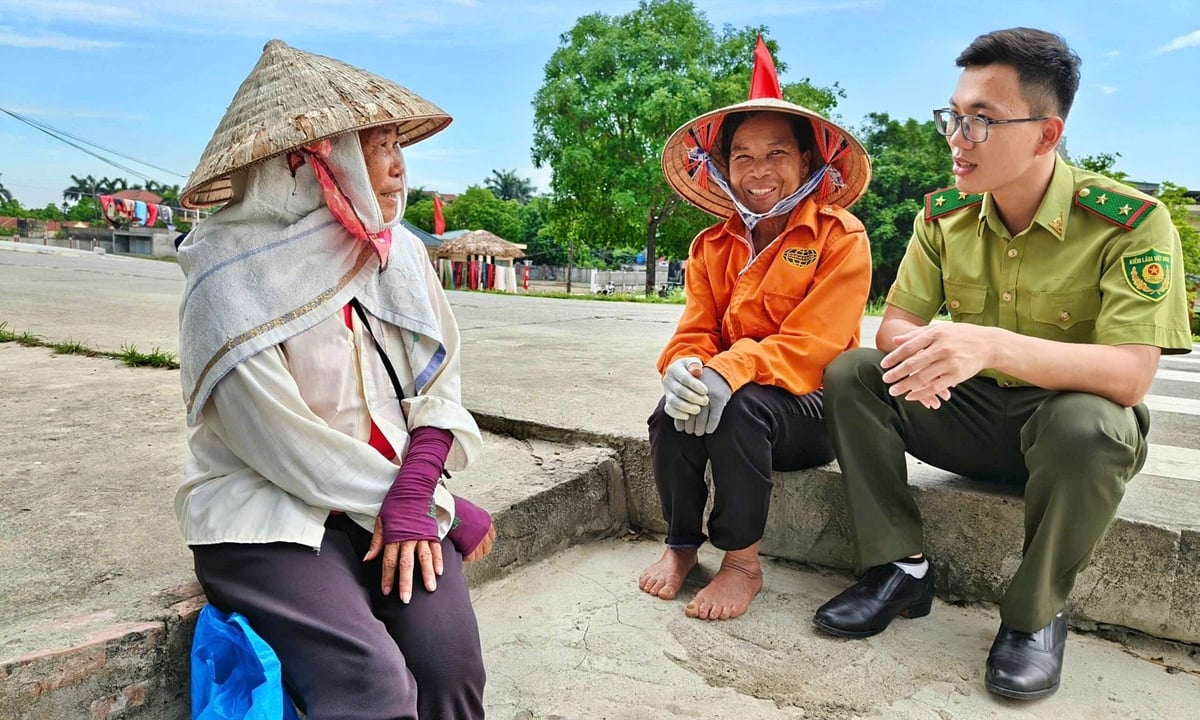
Ms. Dinh Thi Men (left) talks with forest rangers of the management board. Photo: Bao Thang.
Men are not the sole individuals responsible for safeguarding the reserve. Many others enjoy her daily employment at the once-bustling boat dock. In addition to transporting visitors across the bay, the over-60-year-old woman and her self-managed group remain on land to maintain the landscape and protect the environment of this wetland reserve.
Her organization is referred to as the "peacekeepers of Van Long" by the local populace. This 3,500-hectare wetland was designated as Vietnam's ninth Ramsar site. But they aren’t forest rangers, nor do they hold any official title. They are among the first members of the Van Long Ecotourism Cooperative, where they earn additional income from tourism while voluntarily canoeing between limestone cliffs to observe the habitat of birds, particularly the Delacour's langur, Van Long's endemic primate.
Over 20 years ago, when the province announced the establishment of the reserve, Mrs. Men was one of the few who voluntarily gave up five plots of fertile farmland—her most valuable asset—to make way for the conservation core zone. "We relinquished the land, but we retained the forest. Our grandchildren will have nothing to see if the forest disappears," she declares, her gaze fixed on the mountain slope where langurs frequently emerge at dawn.
Conservation isn't merely a slogan for this woman, who has lived her entire existence in Gia Vien's wetlands. It is evident in every small action, such as whispering a clumsy "Don't litter" in English to remind visitors not to litter or bowing to express gratitude to those who place their trash in the bags supplied on the boat.
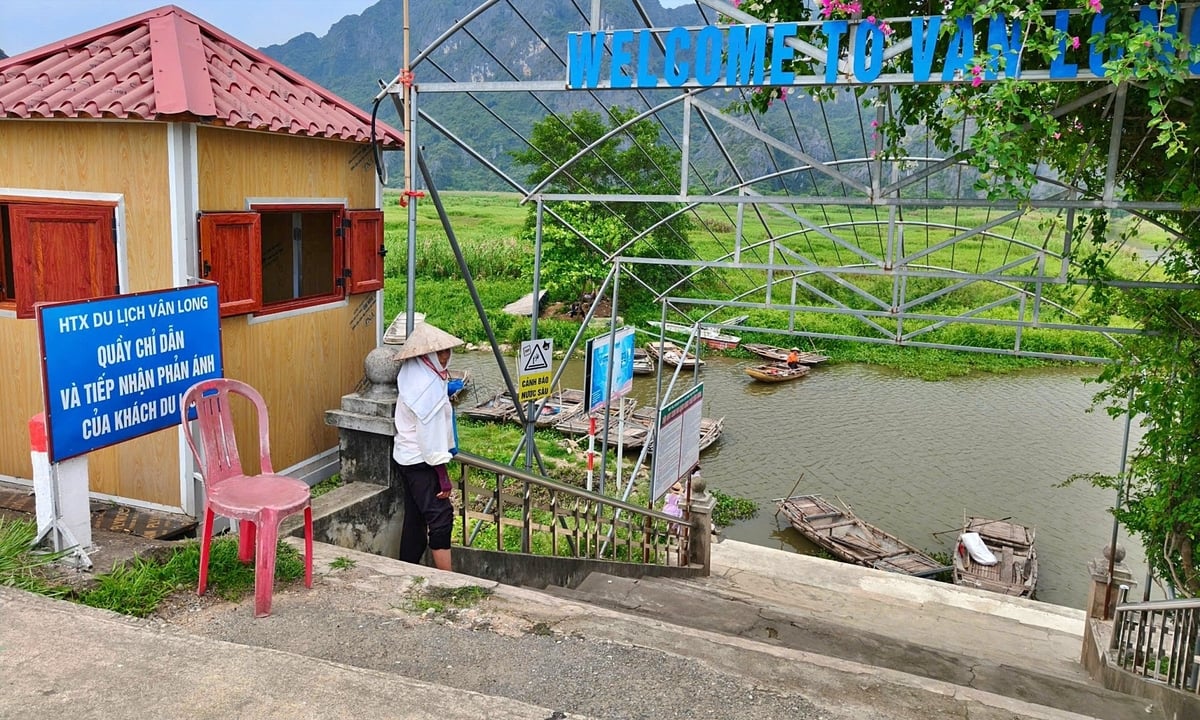
The entrance to the tourist area is always neat and clean. Photo: Bao Thang.
It is unlikely that many individuals would suspect that Van Long's wetlands are artificial. A 30-kilometer dike was constructed along the left bank of the Day River in the 1960s to regulate inundation. The critically endangered Delacour's langur found refuge in the sunken basin, which water pooled, plants flourished, and birds congregated due to the blocked flow.
Mr. Dinh Van Quynh, an officer at the Hoa Lu – Van Long Special-Use Forest Management Board, recalled that the province considered relocating residents in the early 2000s to safeguard the area. However, the strategy was altered when the costs surpassed 300 billion VND, and the community would be responsible for conservation. This led to the development of the "people-powered conservation" paradigm. Locals began recounting tales about the langurs, the limestone karsts, and the reeds, rather than cutting trees or capturing birds. They tenderly guided visitors through the misty morning waters.
The colors of Van Long are distinct during each season. Soft pink lotus blossoms surround the surface from May to July, attracting domestic tourists. The reserve is open to international visitors from November to April, when migratory birds are in search of warming. The wetland hums like a silent meditation between earth and sky, birds sweep across the horizon, and every paddle stroke stirs the still water in the fresh air.
It's hard to imagine that just over two decades ago, Van Long was only reachable via muddy paths. Visitors were required to transfer vehicles and navigate through mud. Locals extended invitations to them to stay overnight and share meals in the absence of guesthouses. This was the catalyst for the development of community tourism. Residents learned to guide tours, speak a few English phrases, and tell stories with local charm and love for their homeland.
One pioneer was Mr. Tran Xuan Quang, Director of Van Long Service Cooperative, a war veteran often joked about as “carrying the communal burden.” If a household was hesitant, he knocked on their doors and patiently explained. “Protecting the environment is protecting our livelihood,” he says plainly.
Initiatives such as "Green Tourism Week," "Green Sundays," and "Trash for Books" were born from this ethos. Despite their distinct identities, their common objective is the preservation of biodiversity, scenic beauty, and sustainable livelihoods. Once lost, these resources are irreplaceable.
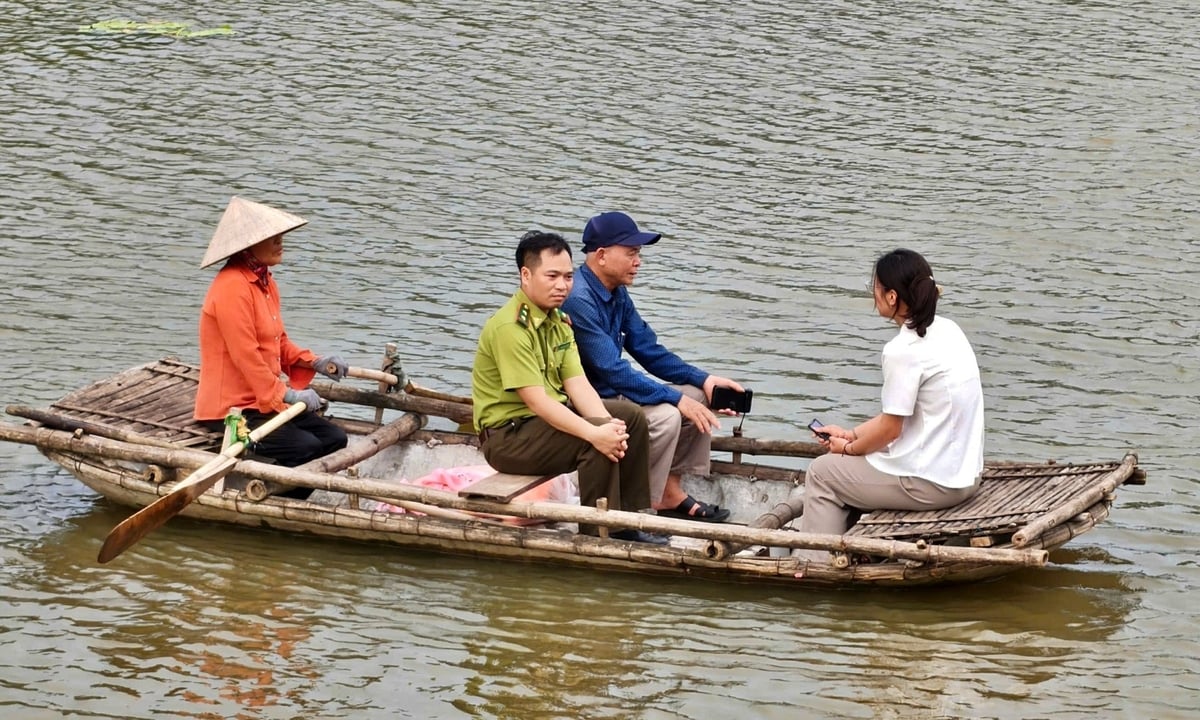
Many people living around Van Long lagoon earn extra income from being tour guides. Photo: Bao Thang.
In other regions, the government may be responsible for conservation. However, in Van Long, it is the property of all. There are no decrees or slogans; instead, there are tangible actions, such as the distribution of illustrated nature books to children, the organization of langur storytelling contests, the distribution of hats to students for cleansing, and the posting of reminder signs.
"The community is the foundation of Van Long." Deputy Director of the Hoa Lu – Van Long Special-Use Forest Management Board, Mr. Nguyen Van Linh, states, "They regard this land as an integral component of their being." The board intends to maintain Van Long's status as a globally recognized Green List site under IUCN by collaborating with international organizations to restore buffer zones, expand habitats, and ensure the langurs have secure residences.
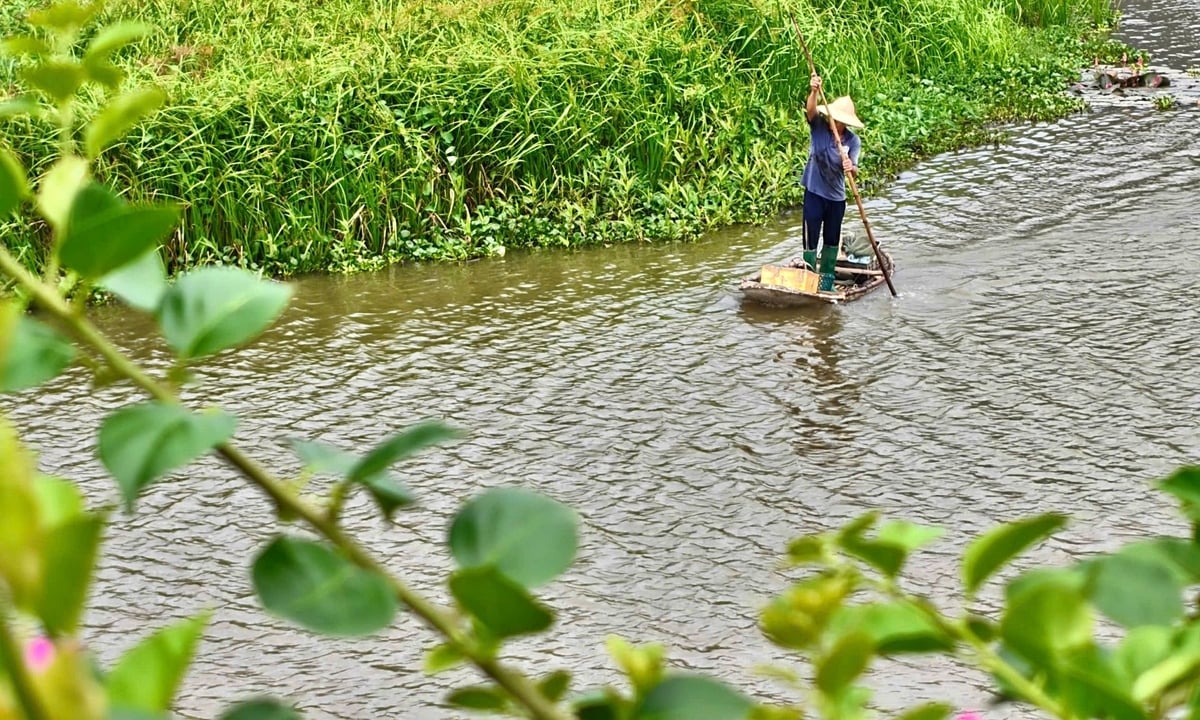
People living around the area encouraged each other to check the habitat in the flooded lagoon. Photo: Bao Thang.
In accordance with the province's new strategy, Van Long will adhere to a "slow eco-tourism" model that prioritizes cultural preservation and authentic experiences while avoiding over-commercialization. New excursions will allow visitors to engage with daily life, such as rowing at sunrise, visiting traditional reed mat villages, and listening to elders recount limestone legends. Although straightforward and gradual, each event is profoundly significant.
In the meantime, infrastructure upgrades, including walkways, docks, and visitor centers, are being designed with the most care to preserve the landscape. The blueprints account for each stone, reed area, and water's edge. Yet no design alone can capture a place’s soul.
What has preserved Van Long for more than two decades is not funding or detailed master plans. They are individuals such as Mrs. Men and Mr. Quang, who at dawn point out bird trails and langur footprints and bend down to gather up litter. They preserve this heritage as if it were their own memory, transmitting it through gentle oar strokes and motionless gazes from beneath weathered conical hats.
Children who grow up in this region do not acquire knowledge about conservation from textbooks. They acquire it by rowing with their fathers, listening to their grandmothers recount langur tales, and observing their mothers wade through reeds to collect plastic bags. These lessons are significantly more visceral than any park banner.
In the future, Van Long may witness an increase in the number of wooden bridges, bridges, and visitor centers. However, in the absence of the quiet bow of a boatman greeting a guest or the wistful wave of a child sending farewell from the reed-lined shore, they will be of little significance.
The sun sets. The water is silvery in appearance. A langur's cry resonates from the limestone cliffs, resembling a gentle farewell. An oar plunges into the tranquility. And there, where the reeds whisper in the breeze, individuals continue to discreetly safeguard this "bay without waves" with bare hands and hearts that require no "subtitle" for their affection for this land.
Translated by Linh Linh
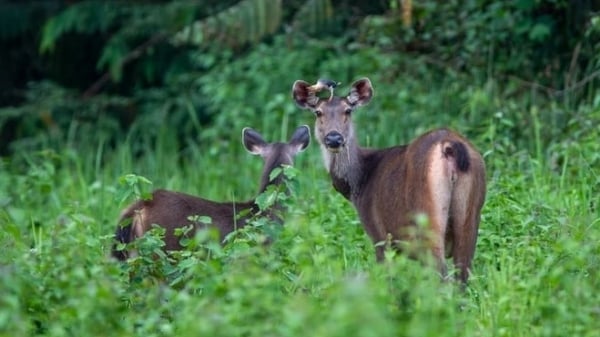
(VAN) WWF, GIZ, IUCN, UNDP call for biodiversity conservation and sustainable development must be regarded as a unity in strategies for a green future.
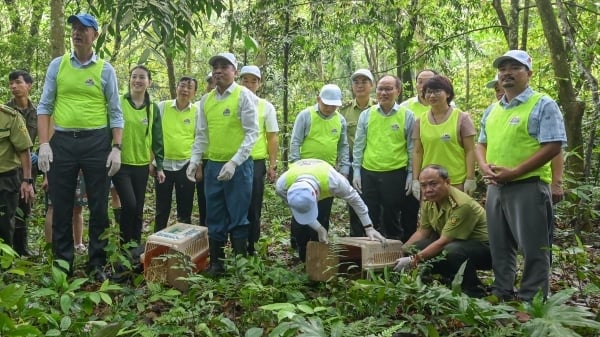
(VAN) On celebration of International Day for Biological Diversity, Deputy Minister Nguyen Quoc Tri called for practical actions to address nature and biodiversity conservation.
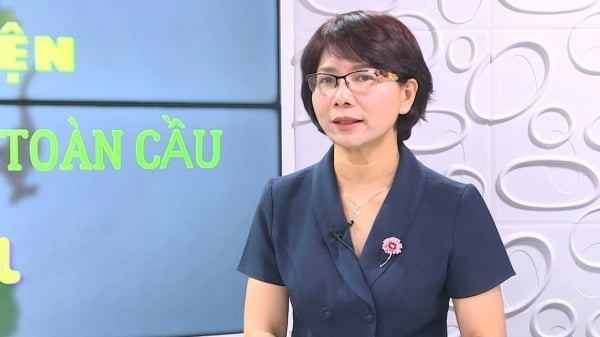
(VAN) Dr. Hoang Thi Thanh Nhan – Deputy Director of the Nature and Biodiversity Conservation Agency – highlighted this on the International Day for Biological Diversity, May 22, 2025.
![Ho Chi Minh city adapts to climate change: [2] Accelerating action](https://t.ex-cdn.com/nongnghiepmoitruong.vn/608w/files/chiqk/2025/05/22/4024-4220-bien-doi-khi-hau-1-100626_766.jpg)
(VAN) Clearly recognizing the challenges posed by climate change, Ho Chi Minh city has swiftly shaped its policies and implemented practical solutions to adapt.
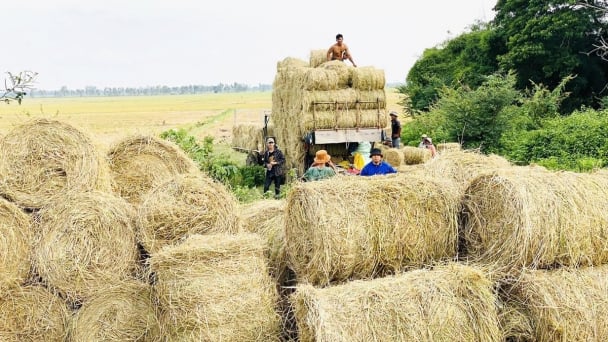
(VAN) Rice straw is no longer just a discarded byproduct, but it is becoming a green resource that helps farmers in the Mekong Delta reduce emissions and promote circular, sustainable agriculture.
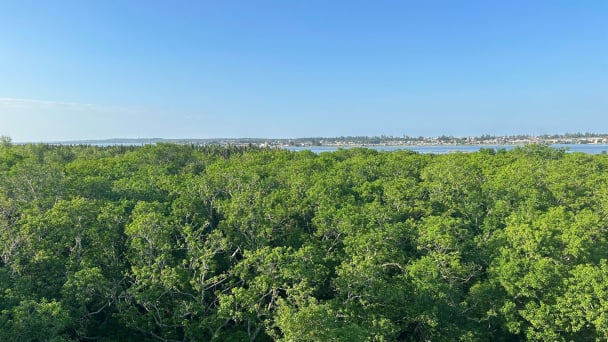
(VAN) Other Effective Area-based Conservation Measures (OECMs) are solutions that contribute effectively to achieving the goals of the Kunming–Montreal Global Biodiversity Framework.